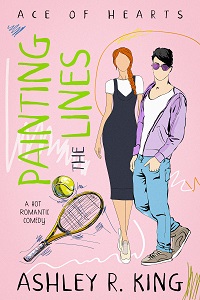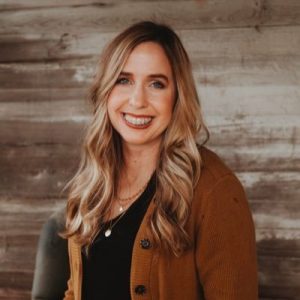Pantser, Plotter, Plantser and Everything in Between By Ashley R. King
 We’ve all heard the terms pantser and plotter. Pantsers let the story take them where it may whereas plotters have a pretty good idea of where they want their story to go, possibly even outlining it with beat sheets. Then there are people like me, people who are a good mix of both, a plantser, if you will, and no, that’s not a reindeer name.
We’ve all heard the terms pantser and plotter. Pantsers let the story take them where it may whereas plotters have a pretty good idea of where they want their story to go, possibly even outlining it with beat sheets. Then there are people like me, people who are a good mix of both, a plantser, if you will, and no, that’s not a reindeer name.
When the idea for my debut novel, Painting the Lines, struck, I was out of town without a laptop. Luckily, I always carry a journal, so I was able to get started. We were in Greenville, South Carolina, and my husband had four days of conference meetings to attend.
What did I do? I went to Falls Park on the Reedy and sat outside, enjoying the sunshine while writing my heart out. Most of the times when I begin writing a story, I don’t even stop to name my characters. I’ll place an asterisk and maybe the letter that I want their name to start with on the page. It’s just that when the muse visits, I can’t slow down, or I’ll lose my creative energy.
Once I feel that I’ve done all I can without interrupting my flow, I’ll then decide on character names by visiting baby name websites. I’m big on picking uncommon names or names with interesting meanings, especially because growing up I had to sit in classes with no less than four other Ashleys (80’s baby here).
When I began writing Painting the Lines, I only knew the ending—what both of my main characters, Amalie and Julian, would achieve. For the most part, I had no idea where I was going throughout, allowing the narratives to shift and turn along the way. But there were some spots where I had to plan, hence the plantsing.
For example, my novel focuses around a washed-up tennis player and a failed writer. I knew that my tennis player hero would need to play certain matches in order to get him to the US Open. I knew which ones I wanted him to win and which I wanted him to lose. My heroine? I knew I wanted her to face actual struggles that writers go through along the way, the pressure that we put on ourselves. And of course, there’s the romance aspect of it—I knew right away that I wanted enemies to lovers, with lots of banter, and a slow burn. From there I was able to fill in the blanks, almost like a color by number.
I’m not particularly picky about having a writing location. I find that I like to write at the kitchen table, which is adjacent to my living room. I’ll have my laptop set up at there, along with an array of sticky notes, notebooks, pens (oh, I’m very picky about my pens and I love my Flairs, which I blame on being a teacher), and my cellphone (turned on silent) with headphones plugged in. And then I’m writing.
I’m a teacher by day, so I only write in the evenings after dinner or on the weekends. Some writers like to judge their progress by word count, but I always judge mine by page numbers. During the week I like to get at least five-ten pages in a night, and sometimes on a particularly good day on the weekend, when my creativity cooperates, maybe twenty or thirty.
 The biggest thing that I credit to my writing process is music. I find that I can’t write without it! I like to take the time to create a playlist for each novel, choosing songs that I feel encapsulate character emotions, certain scenes, as well as what I want readers to get from the story. For example, when writing my debut, I pulled songs from artists like the Killers, Keane, Amy Shark, Joey Pecoraro, Tegan and Sara, and Jimmy Eat World. Music never fails to transport me deeper into my story, to the scenes that I’m writing, and if it’s an exceptionally emotional scene, the moodier the music the better.
The biggest thing that I credit to my writing process is music. I find that I can’t write without it! I like to take the time to create a playlist for each novel, choosing songs that I feel encapsulate character emotions, certain scenes, as well as what I want readers to get from the story. For example, when writing my debut, I pulled songs from artists like the Killers, Keane, Amy Shark, Joey Pecoraro, Tegan and Sara, and Jimmy Eat World. Music never fails to transport me deeper into my story, to the scenes that I’m writing, and if it’s an exceptionally emotional scene, the moodier the music the better.
Editing is a different beast all together, however. I prefer all upbeat songs to help keep me going. My editor, Charissa Weaks, who is absolutely amazing and a brilliant writer, and I went through two edits—the second one was really cool because we worked in tandem on a Google Doc. Charissa then formatted it in an ebook version so that we could do a read through to make sure the plot flowed smoothly, while also checking for redundancies, misspelled words, long chapters, etc.
The next step is copyedits and then it’s off to press! One thing I did do after the editing process was create an editing notebook. It’s where I copied my editor’s notes so that I could reference them when reworking book two in the series. I also made a list of words that I liked to overuse, one of which stands out right now is “smirk.” I completely blame Damon Salvatore from The Vampire Diaries for that one.
I say all of this to say that every writer’s process is different and there is no “right” way—whatever works, well, works. After all, isn’t that the beauty of being a creative—to do things our own way?
—
Ashley R. King is a middle school English teacher whose love of the written word began when her mom took her to the public library, letting her check out stacks of books taller than she was. She’s the least athletic person you’ll ever meet, but that doesn’t decrease her love for her favorite sport, tennis.
She loves swoony romances and is addicted to sweet tea. When she’s not teaching or writing happily ever afters, she can be found snuggled up with a book, travelling, or quoting obscure lines from her favorite movies and tv shows. She lives in a small town in Georgia with her favorite person in the world—her husband, and their sweet and chatty spoiled cat, Cleo.
Category: Contemporary Women Writers, How To and Tips

























